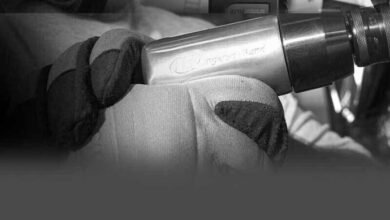How the Money Laundering Reporting Officer Strengthens a Company’s AML Framework

The current very controlled financial market is not only legally obliged to comply with the Anti-Money laundering (AML) laws but it is a business necessity. The Money Laundering Reporting Officer (MLRO) is at the core of any healthy AML program and he/she is the one who is supposed to ensure that financial procedures of an organization are conducted with integrity. The MLRO ensures that the company adheres to the regulations of the AML, identifies the suspicious activity, and develops the culture of compliance to reduce the risk of financial crime.
Developing the Role of a Money Laundering Reporting Officer
The money laundering reporting officer (MLRO) is the key figure of contact between the company and the regulatory bodies with regard to money laundering issues. Their main task is to manage the AML structure of the organization and make it work efficiently according to the local and international regulations.
An MLRO usually has the following roles:
Developing and sustaining AML policies and procedures.
- Tracking suspicious activity transactions.
- Checking internal reports and forwards suspicious transactions to the authorities using Suspicious Activity Reports (SARs)
- Carrying out AML training among the staff members.
- Keeping abreast with new money laundering typologies and compliance demands.
This post will require a thorough knowledge of financial laws, as well as an active attitude towards the possibility of anticipating the risks before they get out of hand.
Creating and sustaining a successful AML Framework
An effective AML framework is a set of policies, procedures, controls and technologies meant to curb the abuse of financial systems. The MLRO becomes critical in the process of making sure that all the components work smoothly.
Formulating AML Policies and Procedures
The MLRO writes and keeps revising the AML policy of the company, which has the procedure of how the company identifies, evaluates and avoids the risks of money laundering. These policies act as a guide to employees and there will be uniformity in the practices of compliance.
Risk Assessment and Customer Due Diligence (CDD)
An MLRO will be one that will see that the company does due diligence on its clients prior to onboarding. This is checking on customer identity, their business nature and the level of risk involved. In the case of high-risk clients, more severe enhanced due diligence (EDD) is used.
Surveillance and Detection Systems
MLROs also control tools that monitor transactions raising concerns about suspicious suspects, including high cash deposits, numerous international transfers, or discrepancies in customer activities. Using these alerts, the MLRO will be able to decide whether a transaction needs further investigation.
Suspicious activity Reporting (SAR)
The submission of SARS to the corresponding authorities as the suspicious activity is identified is one of the key duties of the MLRO. Fast and precise reporting enables law enforcement agencies to provide the identification and investigation of possible money laundering.
See also: Advantages of Optical TPU Technology for Clear Bra Owners
Influencing a Culture of Compliance
The MLRO is also important in instilling a compliance culture throughout the organization beyond systems and policies. Financial crime may face the first line of defence in employees, and it is their knowledge that will ensure compliance.
Employee Training
The MLRO performs regular AML training to make the staff aware of their duties, red flags, and the way to report about suspicious activity within the company.
Encouraging Transparency
The MLRO guarantees that employees are not hesitant to report possible problems by means of encouraging open communication and non-retaliation policies.
Leadership Collaboration
The MLRO liaises with the senior management to ensure that all compliance goals are aligned to business goals to enable risk management to be incorporated in decision-making processes.
Such culture of vigilance and accountability reinforces the whole AML program and assists in the prevention of intentional and unintentional compliance failures.
Finding your way around the Regulatory Change and Global Standards
The laws of AML are ever changing as the financial systems get increasingly sophisticated and the digital dealings become the new standard. The MLRO should also be updated on international AML requirements including those that have been developed by the Financial Action Task Force (FATF) and local laws in the jurisdictional location of the company.
The important tasks in this respect are:
- Risk assessment on a regular basis to reflect new or evolving threats
- Revision of internal policies to ensure that they meet new regulations.
- Communication with regulators on audit or investigation.
Through being on the offensive on the issue of compliance, the MLRO makes sure that the company does not falter in a fast-evolving regulatory environment.
Using Technology to increase AML Efficiency
Contemporary AML systems are more dependent on technology to improve the detection and reporting systems. The MLRO usually takes the lead in the adaptation of RegTech and AI-driven tools to monitor transactions, facilitate the Know Your Customer (KYC) procedures, and create more precise risk profiles.
Manual review is lessened and mistakes are reduced through automation and the MLRO is able to work on more complicated cases that require human judgment. Such a technology integration can not only help enhance compliance, but also make the operations more efficient.
The MLRO Strategic Importance
A good MLRO is not merely a complying officer; the good officer is one who makes strategic value to the organization. They ensure that the company does not suffer financial and reputational losses to gain the trust of regulators, investors, and customers.
Moreover, the knowledge obtained with the help of transaction monitoring and risk analysis could also inform the larger business decisions, including the identification of the safe market to enter into or the understanding of the trustworthiness of a prospective partner.
In a short term, the MLRO is a role that acts as a watchdog and advisor, playing the role of balancing compliance requirements with strategic attempts.
Conclusion
The Money Laundering Reporting Officer is an essential part of AML in a company. The MLRO provides consistency in financial crime through alert surveillance, proper policy execution, training of personnel, and involvement in regulation, which keeps the organization safe and compliant.
The significance of this role is increasing as the world financial threats are continuously changing. On companies that provide their MLROs with the necessary tools, power, and resources, the creation of a culture of compliance, which does not only comply with the regulatory expectations but also safeguard not only the reputation but the integrity of the business in the long term, is more likely to take place.





